
The Enchanting Latin Quarter of Paris
Discover the timeless allure of Paris's Latin Quarter, a historic neighbourhood brimming with intellectual heritage, charming cafes, vibrant streets, and cultural treasures.
The Latin Quarter, or 'Quartier Latin', is one of Paris's most historic and picturesque neighbourhoods. Nestled on the Left Bank of the Seine, it has been a hub of intellectual life for centuries, thanks to its proximity to the Sorbonne University. Here, the narrow, winding streets are lined with charming bookshops, historic cafes, and lively bistros where students, artists, and tourists alike gather to soak in the vibrant atmosphere. The neighbourhood is steeped in history, with landmarks such as the Pantheon, where many of France's great minds are entombed, and the medieval church of Saint-Séverin. The Latin Quarter is also home to the beautiful Luxembourg Gardens, a perfect spot for a leisurely stroll or a picnic. As you wander through the area, you'll find yourself transported back in time, with ancient Roman ruins like the Cluny Museum and the Arènes de Lutèce offering a glimpse into the city's distant past. Despite its historical significance, the Latin Quarter is far from being a relic of the past. It is a lively and dynamic area, full of contemporary art galleries, boutique shops, and an eclectic mix of restaurants offering everything from traditional French cuisine to international delights. Whether you're a history buff, a culture enthusiast, or simply looking to experience the quintessential charm of Paris, the Latin Quarter offers a unique and unforgettable experience.
Local tips in Latin Quarter
- Visit the Luxembourg Gardens in the morning to avoid crowds and enjoy the serene atmosphere.
- Explore the small, independent bookshops like Shakespeare and Company for a literary treat.
- Take a guided walking tour to fully appreciate the rich history and hidden gems of the area.
- Try the local cuisine at traditional bistros, but also explore international dining options for a diverse culinary experience.
- Check the schedules for events and exhibitions at the Sorbonne University and nearby art galleries.
The Enchanting Latin Quarter of Paris
The Latin Quarter, or 'Quartier Latin', is one of Paris's most historic and picturesque neighbourhoods. Nestled on the Left Bank of the Seine, it has been a hub of intellectual life for centuries, thanks to its proximity to the Sorbonne University. Here, the narrow, winding streets are lined with charming bookshops, historic cafes, and lively bistros where students, artists, and tourists alike gather to soak in the vibrant atmosphere. The neighbourhood is steeped in history, with landmarks such as the Pantheon, where many of France's great minds are entombed, and the medieval church of Saint-Séverin. The Latin Quarter is also home to the beautiful Luxembourg Gardens, a perfect spot for a leisurely stroll or a picnic. As you wander through the area, you'll find yourself transported back in time, with ancient Roman ruins like the Cluny Museum and the Arènes de Lutèce offering a glimpse into the city's distant past. Despite its historical significance, the Latin Quarter is far from being a relic of the past. It is a lively and dynamic area, full of contemporary art galleries, boutique shops, and an eclectic mix of restaurants offering everything from traditional French cuisine to international delights. Whether you're a history buff, a culture enthusiast, or simply looking to experience the quintessential charm of Paris, the Latin Quarter offers a unique and unforgettable experience.
Iconic landmarks you can’t miss
Panthéon
Discover the rich history and stunning architecture of the Panthéon, a symbol of French culture and the final resting place of many illustrious figures.

Fontaine Saint-Michel
Explore the captivating Fontaine Saint-Michel, a historical landmark in Paris, where culture, art, and history converge in a stunning architectural masterpiece.

Arènes de Lutèce
Discover the Arènes de Lutèce, an ancient Roman amphitheater in Paris offering a unique blend of history and modern charm.
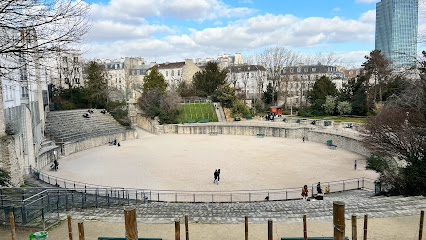
Square of Saint-Jacques Tower
Explore the serene beauty of the Square of Saint-Jacques Tower, a historic city park in the heart of Paris, perfect for relaxation and sightseeing.
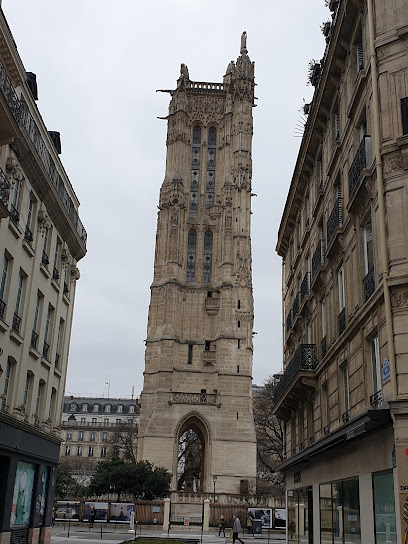
Square des arènes de Lutèce
Explore the historic Square des Arènes de Lutèce, a serene park in Paris where ancient ruins meet modern relaxation amidst lush landscapes.
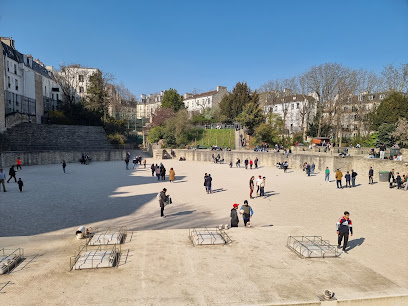
Place Saint-Michel
Experience the charm of Place Saint-Michel, a historical jewel of Paris, surrounded by stunning architecture, vibrant culture, and the Seine River.

Medieval Garden of the Cluny Museum
Explore the charm of the Medieval Garden at the Cluny Museum in Paris, where history and nature beautifully intertwine.
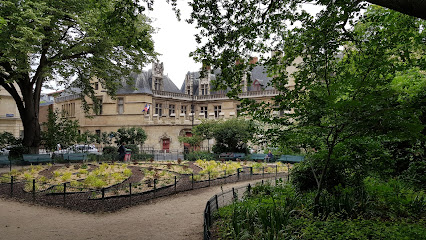
Statue Auguste Comte
Explore the Statue of Auguste Comte in Paris, a significant tribute to the father of Positivism amidst the historic ambiance of the Latin Quarter.

Faune dansant
Explore Faune Dansant, a historical landmark in Paris that embodies the city's artistic spirit and rich cultural heritage.
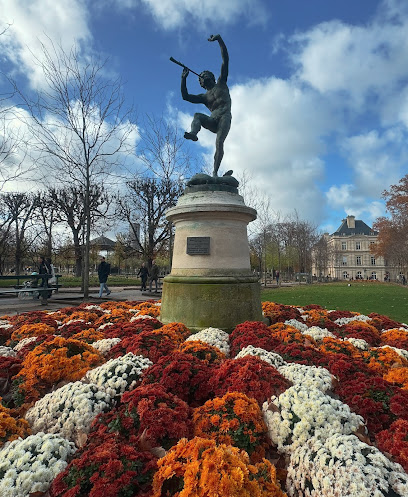
Memorial to The Massacre of October 17th, 1961
Explore the Memorial to The Massacre of October 17th, 1961 on Île de la Cité—an important historical landmark that honors the legacy of resilience and human rights.
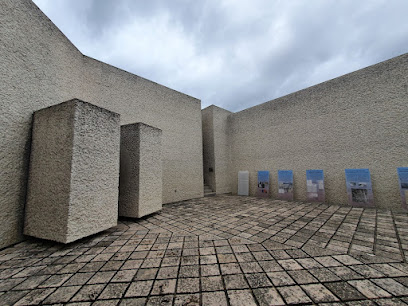
Unmissable attractions to see
Jardin du Luxembourg
Explore the enchanting Jardin du Luxembourg, a lush garden in Paris filled with history, art, and natural beauty for every traveler.

Panthéon
Discover the Panthéon, a stunning monument in Paris symbolizing history and culture, housing the remains of France's greatest minds.

Cathédrale Notre-Dame de Paris
Discover the stunning Cathédrale Notre-Dame de Paris, a masterpiece of gothic architecture and a symbol of French history and culture.

Jardin des Plantes
Explore the breathtaking Jardin des Plantes, Paris' premier botanical garden, where nature, history, and beauty converge in a serene oasis.
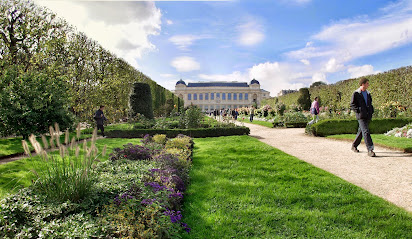
Place des Vosges
Discover the charm of Place des Vosges, Paris's oldest square, where history, architecture, and nature beautifully converge.
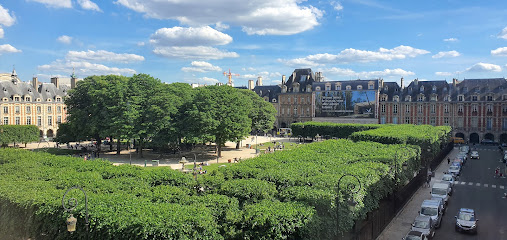
Conciergerie
Explore the Conciergerie in Paris, a historic monument that reflects the city's rich history and architectural beauty, from royal palace to revolutionary prison.

Musée de Cluny
Explore the medieval world at the Musée de Cluny, a historic museum in Paris showcasing exquisite art and artifacts from the Middle Ages.
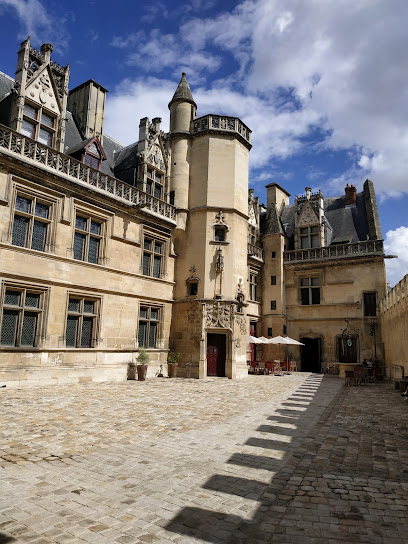
Arènes de Lutèce
Discover the ancient Arènes de Lutèce, an iconic Roman amphitheater in the heart of Paris, perfect for history enthusiasts and casual visitors alike.

Tour Saint-Jacques
Discover the enchanting Tour Saint-Jacques, a historical gem in Paris, where Gothic architecture meets breathtaking city views.

Square des arènes de Lutèce
Explore the historical charm and serene beauty of Square des Arènes de Lutèce, a hidden gem in the heart of Paris.
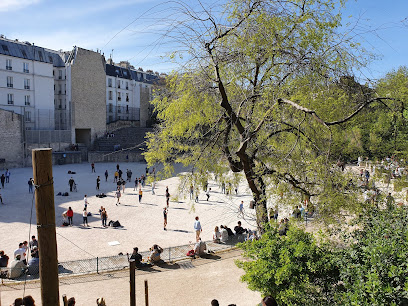
Essential places to dine
Le Petit Châtelet
Discover authentic French cuisine at Le Petit Châtelet in Paris - where every meal is a celebration of culinary excellence and Parisian charm.
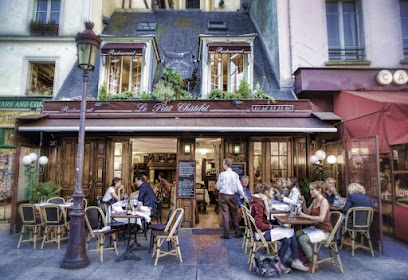
Latin Quartier
Experience authentic Italian pizza in the heart of Paris' vibrant Latin Quartier – a culinary gem blending history and flavor.

Restaurant Le Coupe-Chou
Experience exquisite haute French cuisine at Restaurant Le Coupe-Chou in Paris—where tradition meets modernity in every bite.
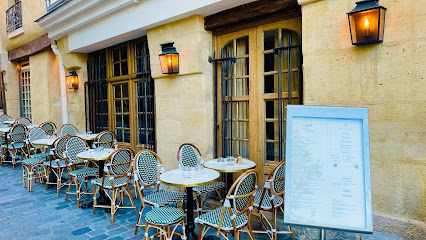
La Table de Colette
Discover La Table de Colette: Where Haute French Cuisine Meets Organic Delights in the Heart of Paris.
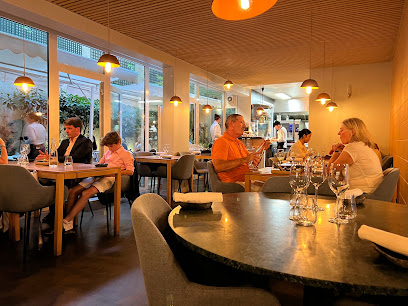
Le Bistrot Du Perigord
Experience authentic French cuisine at Le Bistrot Du Perigord in Paris – where every dish tells a story of tradition and flavor.

Comme Chai Toi
Savor exquisite French cuisine at Comme Chai Toi – a picturesque bistro along the Seine offering fresh flavors and fine wines.

Le Petit Prince de Paris
Experience fine dining at its best in Paris with exquisite French cuisine at Le Petit Prince de Paris.
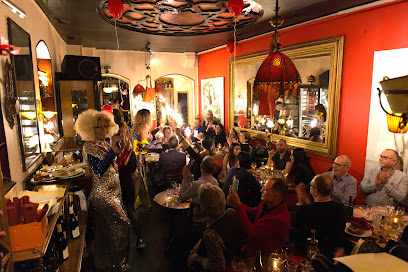
Chez Kelly
Experience authentic French cuisine at Chez Kelly in Paris' Latin Quarter - where tradition meets taste in every dish.
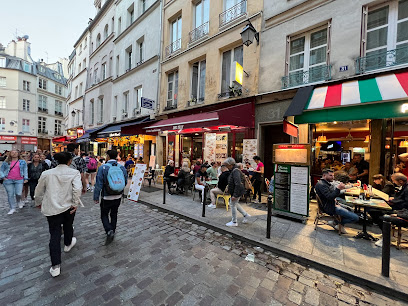
LE LATIN SAINT JACQUES
Discover the authentic flavors of France at Le Latin Saint Jacques Bistro in the heart of Paris.
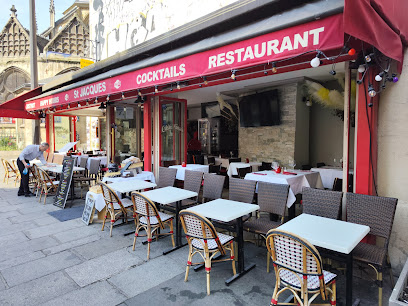
Au Bistrot de la Montagne
Experience authentic French cuisine at Au Bistrot de la Montagne, where every meal is a celebration of flavor in the heart of Paris.

Markets, malls and hidden boutiques
Par’Ici
Discover Par'Ici, a charming gift shop in Paris offering a unique selection of fashion accessories and souvenirs that capture the essence of your journey.
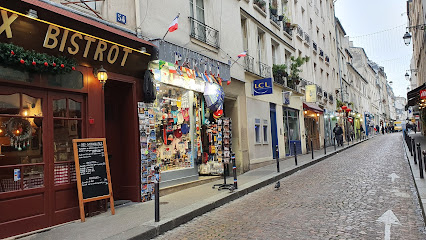
Le Petit Prince
Explore a charming gift shop in Paris, Le Petit Prince, where unique souvenirs and artisan treasures await every tourist.

Pays de Poche
Explore Pays de Poche, a unique gift shop in Paris offering handcrafted treasures and authentic souvenirs that embody the spirit of French artistry.
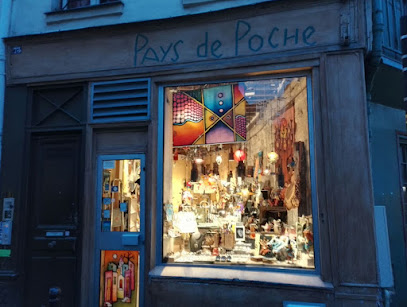
Picture Store Paris
Explore eco-friendly fashion at Picture Store Paris, where style meets sustainability in the heart of the city.
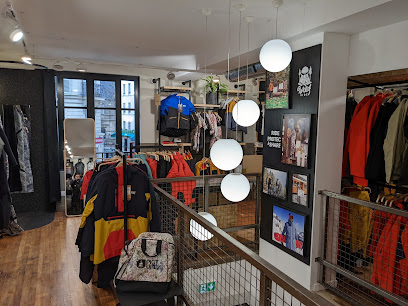
Boutique de la Sorbonne et des Universités de Paris
Discover the Boutique de la Sorbonne for exquisite clothing and unique paper goods in the heart of Paris's historic Latin Quarter.

Flo de Paris
Explore the enchanting Flo de Paris for exquisite jewelry and antique furniture, embodying the timeless elegance of Paris.
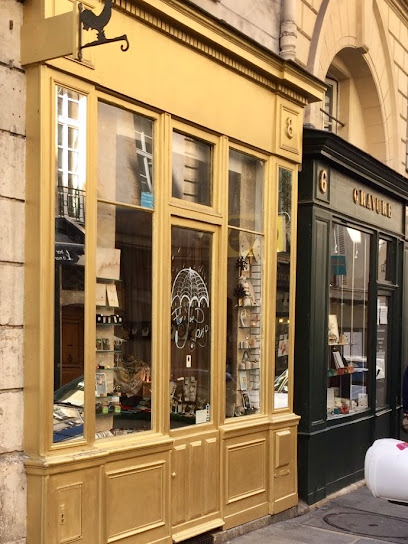
Mega Souvenirs
Discover unique Parisian gifts and souvenirs at Mega Souvenirs, your go-to shop for authentic keepsakes in the heart of the City of Light.
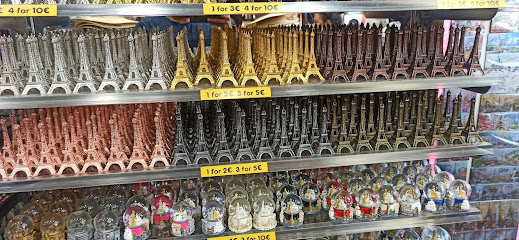
Paris est toujours Paris SAINT MICHEL
Explore a charming gift shop at Paris est toujours Paris SAINT MICHEL, where unique souvenirs and local artisan crafts await every traveler.
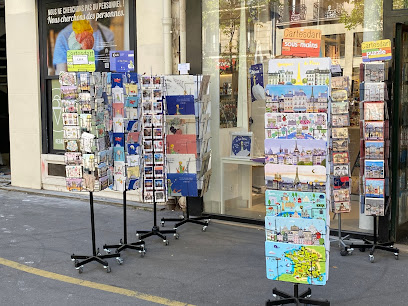
Top Souvenirs
Explore a curated selection of authentic Parisian souvenirs and exquisite gift baskets at Top Souvenirs in the heart of Paris.
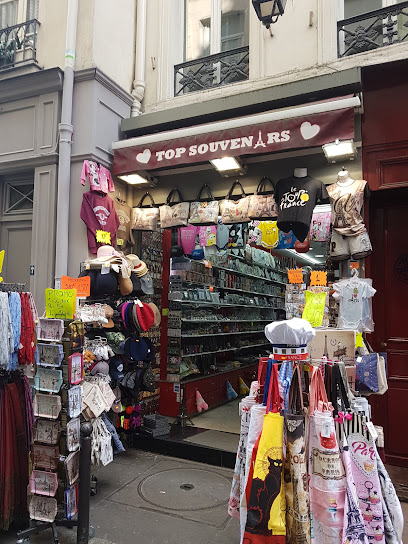
Gift shop Paris INC
Discover unique souvenirs and handcrafted treasures at Gift Shop Paris INC, a charming gift shop in the heart of Paris.
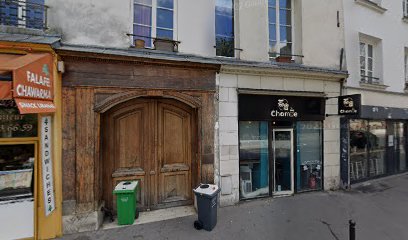
Essential bars & hidden hideouts
Café de Paris V
Experience the enchanting atmosphere of Café de Paris V, a top piano bar in Paris, offering live music, delightful cocktails, and unforgettable memories.

Mad Maker Pub
Discover the lively Mad Maker Pub in Paris, a perfect spot for cocktails, beers, and unforgettable nightlife experiences.

Pub Saint-Michel
Discover Pub Saint-Michel, a lively bar in Paris offering a mix of great drinks, live music, and an unforgettable atmosphere.
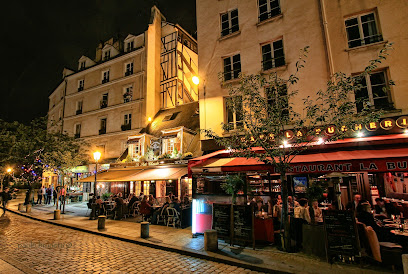
Pub Saint Hilaire
Explore the vibrant nightlife at Pub Saint Hilaire, a unique blend of traditional pub charm and modern cocktail culture in the heart of Paris.
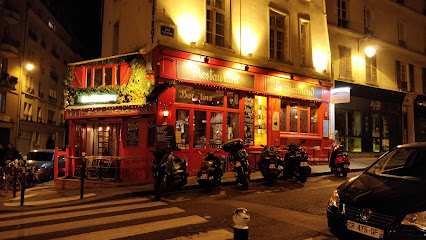
Bull's Brothers Pub
Discover the vibrant nightlife and friendly atmosphere at Bull's Brothers Pub, a must-visit spot in the heart of Paris.

Le Requin Chagrin
Discover Le Requin Chagrin, a charming Parisian pub on Rue Mouffetard, offering a delightful selection of drinks and a vibrant atmosphere.

Teddy's Bar
Discover Teddy's Bar, a vibrant bar and café in Paris, offering a perfect mix of drinks, ambiance, and unforgettable nightlife.
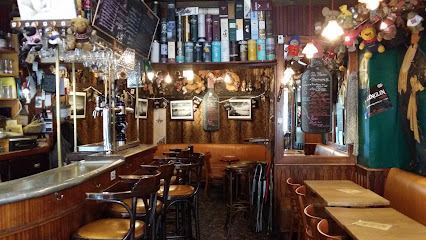
Pub
Experience the authentic Parisian pub culture with a delightful selection of drinks and traditional dishes in a cozy atmosphere.
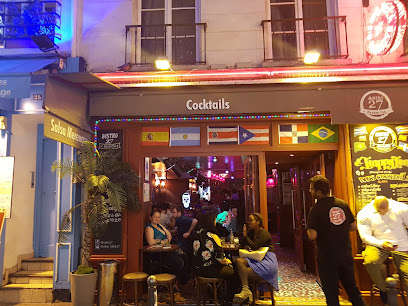
Le Melocoton Bar
Discover the vibrant nightlife at Le Melocoton Bar in Paris, where creative cocktails and craft beers await in a cozy, charming atmosphere.

Alexandre BAR PUB Paris 05
Experience the vibrant nightlife of Paris at Alexandre BAR PUB, where cocktails meet salsa in an unforgettable atmosphere.

Local Phrases
-
- HelloBonjour
[bohn-zhoor] - GoodbyeAu revoir
[oh re-vwahr] - YesOui
[wee] - NoNon
[nohn] - Please/You're welcomeS'il vous plaît/De rien
[seel voo pleh/duh ryen] - Thank youMerci
[mer-see] - Excuse me/SorryExcusez-moi/Désolé
[ex-kew-zay mwah/deh-zoh-lay] - How are you?Comment ça va?
[koh-mon sah vah] - Fine. And you?Bien. Et vous?
[byen. ay voo] - Do you speak English?Parlez-vous anglais?
[par-lay voo ahn-glay] - I don't understandJe ne comprends pas
[zhuh nuh kohm-prahn pah]
- HelloBonjour
-
- I'd like to see the menu, pleaseJe voudrais voir la carte, s'il vous plaît
[zhe voo-dray vwahr lah kart, seel voo pleh] - I don't eat meatJe ne mange pas de viande
[zhuh nuh mahnj pah duh vee-ahnd] - Cheers!Santé!
[sahn-tay] - I would like to pay, pleaseJe voudrais payer, s'il vous plaît
[zhe voo-dray pay-yay, seel voo pleh]
- I'd like to see the menu, pleaseJe voudrais voir la carte, s'il vous plaît
-
- Help!Au secours!
[oh suh-koor] - Go away!Allez-vous en!
[al-lay voo ahn] - Call the Police!Appelez la Police!
[ah-peh-lay lah po-lees] - Call a doctor!Appelez un médecin!
[ah-peh-lay uh may-deh-sahn] - I'm lostJe suis perdu
[zhuh swee pair-doo] - I'm illJe suis malade
[zhuh swee mah-lahd]
- Help!Au secours!
-
- I'd like to buy...Je voudrais acheter...
[zhe voo-dray ash-tay...] - I'm just lookingJe regarde seulement
[zhuh ruh-gard suhl-mahnt] - How much is it?Combien ça coûte?
[kohm-bee-an sah koot] - That's too expensiveC'est trop cher
[say troh shair] - Can you lower the price?Pouvez-vous baisser le prix?
[poo-vay voo bay-say luh pree]
- I'd like to buy...Je voudrais acheter...
-
- What time is it?Quelle heure est-il?
[kell uh-ruh eh-teel] - It's one o'clockIl est une heure
[eel eh tun uh-ruh] - Half past (10)Dix heures et demie
[dees uh-ruh ay duh-mee] - MorningMatin
[mah-tanh] - AfternoonAprès-midi
[ah-pray mee-dee] - EveningSoir
[swahr] - YesterdayHier
[yehr] - TodayAujourd'hui
[oh-zhoor-dwee] - TomorrowDemain
[duh-mahn] - 1Un
[uhn] - 2Deux
[duh] - 3Trois
[twah] - 4Quatre
[kahtr] - 5Cinq
[sank] - 6Six
[sees] - 7Sept
[set] - 8Huit
[wheat] - 9Neuf
[nuff] - 10Dix
[dees]
- What time is it?Quelle heure est-il?
-
- Where's a/the...?Où est un/le...?
[oo eh uh/luh] - What's the address?Quelle est l'adresse?
[kell eh lad-res] - Can you show me (on the map)?Pouvez-vous me montrer (sur la carte)?
[poo-vay voo muh mohn-tray (surr lah kart)] - When's the next (bus)?Quand est le prochain (bus)?
[kahn eh luh proh-shahn (bus)] - A ticket (to ....)Un billet (pour ....)
[uhn bee-yay (poor)]
- Where's a/the...?Où est un/le...?
History of Latin Quarter
-
The Latin Quarter, known as 'Quartier Latin', derives its name from the Latin language, which was used in the area’s universities and schools during the medieval period. This vibrant neighborhood has been an educational hub since the establishment of the University of Paris in the 12th century, making it a center for intellectual discourse and cultural exchange.
-
The Latin Quarter played a pivotal role during the French Revolution. In 1789, students and intellectuals gathered in its cafés and streets to discuss revolutionary ideas. The area was a hotbed of resistance against the monarchy, with the nearby Panthéon serving as a mausoleum for revolutionary leaders.
-
In May 1968, the Latin Quarter became the epicenter of student protests against the government and societal norms. The Sorbonne University was the initial flashpoint for demonstrations that soon spread across France. The protests were marked by calls for greater freedoms, education reform, and anti-establishment sentiments, significantly influencing French society.
-
Beyond its academic significance, the Latin Quarter has been a cultural melting pot for artists, writers, and philosophers. Iconic figures such as Ernest Hemingway, James Joyce, and Simone de Beauvoir frequented its cafés, contributing to its rich literary heritage and making it a pilgrimage site for literary enthusiasts worldwide.
-
The Latin Quarter showcases a diverse range of architectural styles, reflecting its long history. The area is home to the stunning Gothic architecture of the Panthéon, the medieval charm of the Rue Mouffetard, and the neoclassical beauty of the Collège de France, embodying the architectural evolution from the Middle Ages to modern times.
Latin Quarter Essentials
-
The Latin Quarter is easily accessible from various parts of Paris. If you're coming from the Eiffel Tower, take Metro Line 6 from La Motte-Picquet – Grenelle to Charles de Gaulle – Étoile, then transfer to Line 1 to Châtelet, and finally catch Line 4 to Saint-Michel. Alternatively, you can use RER B from Gare du Nord, which will take you directly to Luxembourg station. Buses also serve the area, with several lines stopping at key points in the Latin Quarter.
-
The Latin Quarter is best explored on foot due to its narrow streets and historic charm. However, if you need to travel further, the Paris Metro is a reliable option, with stations like Cluny – La Sorbonne and Saint-Michel providing access to other neighborhoods. Biking is also popular; you can rent a Vélib' bicycle at several stations throughout the area. Bus services are available and can be a scenic way to travel.
-
The Latin Quarter is generally safe for tourists, but standard precautions should be observed. Avoid walking alone in poorly lit areas at night, particularly around the Rue de la Huchette, known for its nightlife. Keep an eye on your belongings, especially in crowded spots like the Panthéon and along the Seine. Petty thefts, such as pickpocketing, can occur but are not rampant.
-
In case of an emergency, dial 112 for immediate assistance in France. Emergency services include police, fire, and medical help. The nearest hospital is Pitié-Salpêtrière Hospital, located just south of the Latin Quarter. For non-urgent medical needs, local pharmacies can provide assistance, and many have English-speaking staff.
-
Fashion: Do dress neatly and respectfully, especially when visiting religious sites. Don't wear overly casual clothing like flip-flops or beachwear. Religion: Do be respectful in places of worship; cover your shoulders and knees. Public Transport: Do be polite and offer your seat to those in need. Don't eat or drink on the Metro. Greetings: Do greet with 'Bonjour' and a smile. Don't skip polite greetings, as they are important in French culture. Eating & Drinking: Do try local cafes and bistros, and embrace the dining experience. Don't rush your meal; dining is a leisurely affair in France.
-
To experience the Latin Quarter like a local, visit the Marché Mouffetard, a vibrant street market where you can sample cheeses, fresh fruits, and pastries. Also, take time to wander the cobbled streets, and discover hidden gardens like the Jardin des Plantes. Engage in conversations with local shopkeepers and partake in the lively atmosphere during the evening, especially around the cafés on Rue de la Huchette and Place de la Sorbonne.
Nearby Cities to Latin Quarter
-
Things To Do in Versailles
-
Things To Do in Rouen
-
Things To Do in Amiens
-
Things To Do in Reims
-
Things To Do in Caen
-
Things To Do in Tours
-
Things To Do in Lille
-
Things To Do in Tournai
-
Things To Do in Mons
-
Things To Do in Ypres
-
Things To Do in Kortrijk
-
Things To Do in Dinant
-
Things To Do in Namur
-
Things To Do in Nieuwpoort
-
Things To Do in Louvain-la-Neuve













